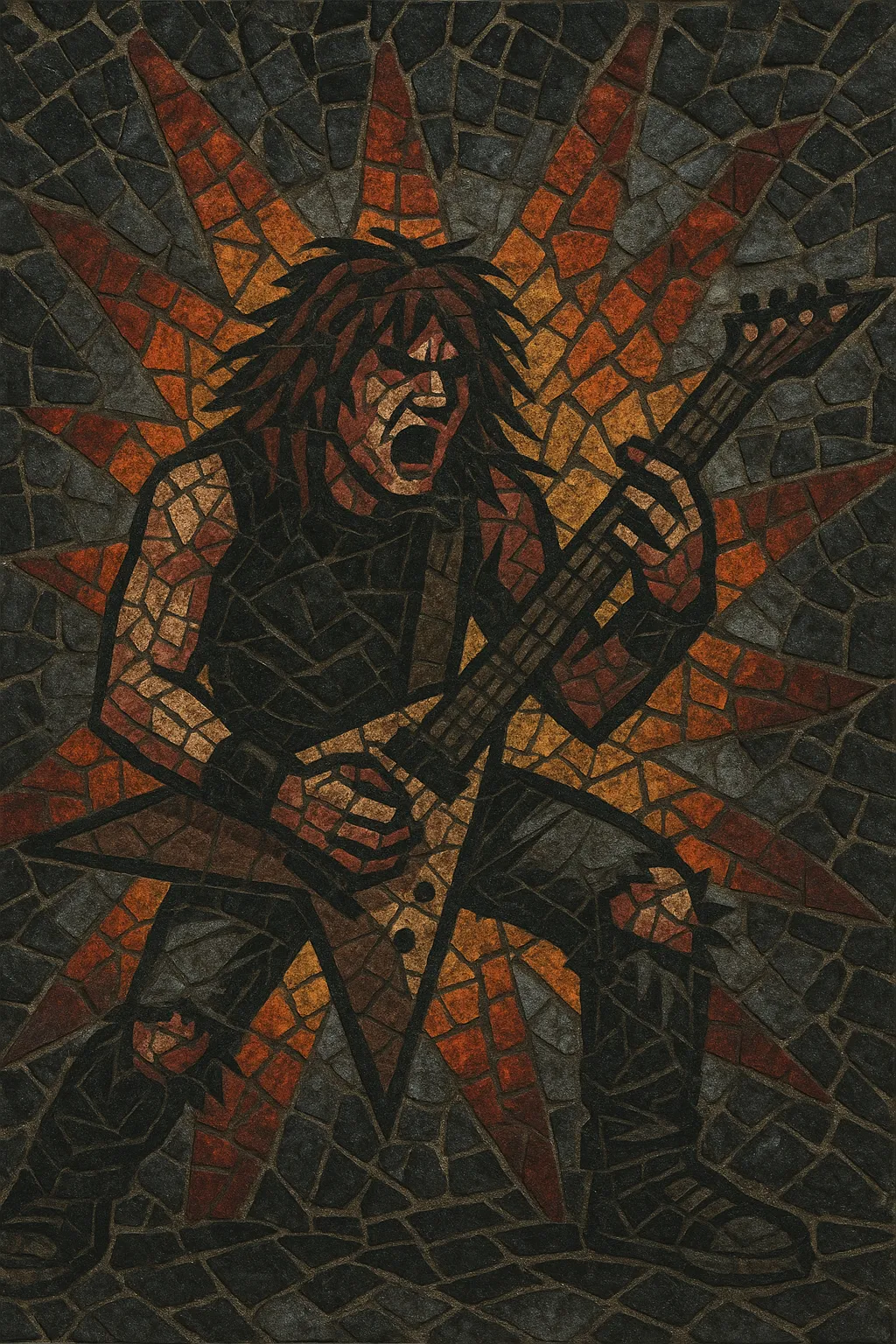
Crossover thrash is a high-speed fusion of hardcore punk’s brevity, aggression, and shouted vocals with thrash metal’s palm-muted riffing, galloping rhythms, and precision.
Songs are typically short and explosive, built on frantic tempos, chunky power-chord riffs, skank and thrash beats, and gang-shout choruses. The style emphasizes mosh-worthy breakdowns, razor-edged guitar tones, and a raw, street-level attitude that keeps the music direct and confrontational.
While lyrically rooted in hardcore’s anti-authoritarian and everyday-life themes, crossover thrash often adds a sarcastic or tongue-in-cheek edge, pairing social commentary with skate culture and party energy.
The roots of crossover thrash lie in U.S. hardcore punk scenes and the contemporaneous rise of thrash metal. Hardcore bands were speeding up and tightening their playing, while thrash bands absorbed punk’s ferocity. Early catalysts include S.O.D.’s “Speak English or Die” (1985), Corrosion of Conformity’s “Animosity” (1985), and Cryptic Slaughter’s “Convicted” (1986), which showcased hardcore energy channeled through metal-tight riffing.
The term “crossover” was popularized by D.R.I.’s 1987 album “Crossover,” encapsulating a growing movement. Regional scenes blossomed: the Venice, California nexus (Suicidal Tendencies, Excel, Beowülf) blended skate culture with metallic crunch; New York (S.O.D., Leeway, Agnostic Front’s “Cause for Alarm”) brought tough, urban grit; and Texas (D.R.I.) emphasized speed and economy. These bands established the template of ultrafast songs, gang vocals, and thrash-level precision.
As thrash’s popularity dipped in the 1990s, many crossover bands evolved toward groove, alt-metal, or straighter hardcore, but the style’s DNA persisted. Its mix of tight metal riffing and hardcore delivery helped shape the emergence of metallic hardcore and informed the extremity of early grindcore.
A 2000s revival—led by bands such as Municipal Waste and M.O.D. offshoot projects—reignited interest, emphasizing breakneck tempos and party-forward aesthetics. In the 2010s, groups like Power Trip connected crossover’s classic punch with contemporary heft, introducing the sound to new audiences while keeping the core ethos—speed, precision, and attitude—intact.

